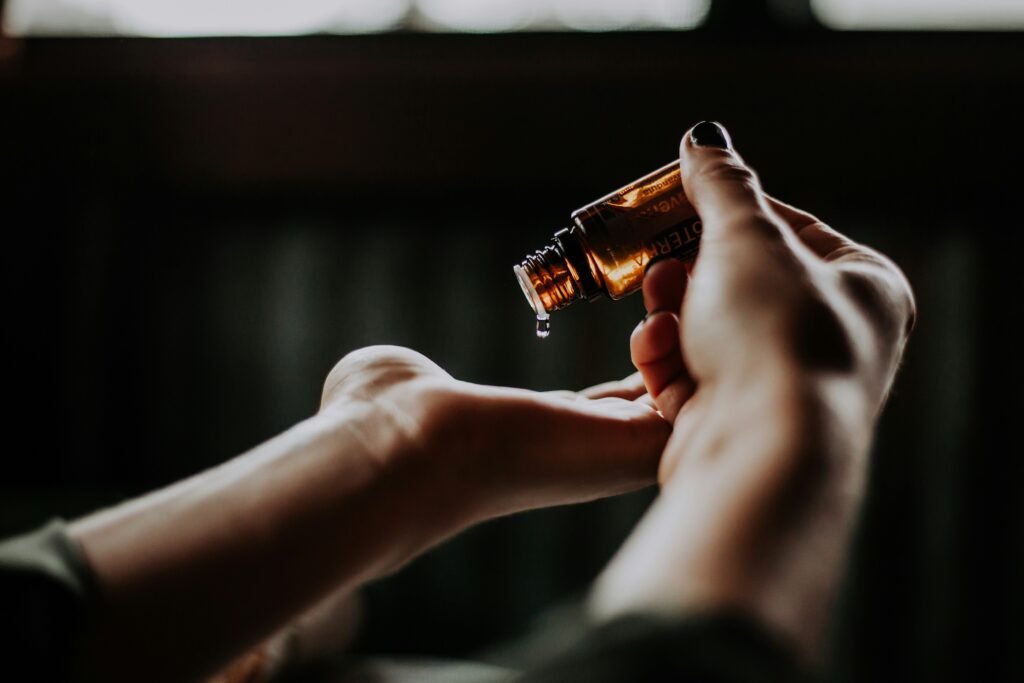In this comprehensive guide, you will discover invaluable tips and techniques to ensure that your high-quality wallet remains in pristine condition for years to come. From regular cleaning routines to effective storage solutions, we will explore every aspect of caring for your wallet to guarantee its longevity and functionality. Whether you are a minimalist who prefers a slim wallet or a fashion-forward individual who adorns their accessories with elegance, this guide will equip you with the essential knowledge to maintain and protect your wallet investment. Say goodbye to worn-out edges, faded leather, and disorganized wallets, as we present you with the ultimate care techniques for your beloved wallet.

This image is property of images.unsplash.com.
Choosing the Right Wallet
When it comes to choosing the right wallet, there are a few factors you should consider. The material of the wallet is important as it can affect its durability and appearance. Wallets can be made from various materials such as leather, fabric, or synthetic materials. Leather wallets are a popular choice due to their durability and timeless style. If you opt for a leather wallet, make sure to choose a high-quality leather that will last longer.
Another factor to consider is the size of the wallet. Wallets come in different sizes, from slim cardholders to spacious billfolds. Consider the number of cards, cash, and other items you carry in your wallet to determine the size that suits your needs. A smaller wallet is ideal if you prefer a minimalist approach, while a larger wallet can accommodate more items.
Selecting a wallet style that matches your personal taste and lifestyle is also important. Wallets come in various designs, such as bi-fold, tri-fold, or even money clip styles. Bi-fold wallets are the most common, offering a classic and compact design. Tri-fold wallets provide more storage compartments for additional cards and cash. Money clip wallets are perfect for those who prefer to carry minimal items and focus on keeping their cash secure.
Once you have considered the material, size, and style, it is essential to check for quality. Look for wallets with sturdy stitching, smooth edges, and secure closures. Pay attention to the quality of the zippers, snaps, or buttons, as these components can affect the overall durability of the wallet. Investing in a high-quality wallet will ensure that it can withstand daily wear and tear, lasting you for years to come.
Consider your specific needs when choosing a wallet. Do you need extra card slots for frequent use or a separate compartment for coins? Think about your lifestyle and the features that would make your wallet more functional. For example, if you frequently travel, a wallet with RFID-blocking technology can protect your cards from identity theft. By considering your needs, you can find a wallet that not only looks great but also offers practicality.
Cleaning and Maintenance
Proper cleaning and maintenance are essential for keeping your wallet in pristine condition. Here are some tips to help you clean and maintain your wallet effectively.
Start by removing any excess dirt and dust from your wallet regularly. Use a soft brush or cloth to gently brush off any surface debris. Pay attention to the corners and crevices where debris can accumulate. This simple step will prevent dirt from seeping into the material and causing damage over time.
If your wallet is made of leather, use a leather cleaner specifically designed for this material. Apply a small amount of cleaner onto a clean cloth and gently wipe the surface of the wallet. Be sure to follow the cleaner’s instructions and avoid using harsh chemicals or abrasive materials that can damage the leather. Regularly cleaning your leather wallet helps maintain its appearance and supple feel.
To keep your leather wallet in top condition, apply a leather conditioner regularly. This will help moisturize and protect the leather, preventing it from drying out or cracking. Apply a small amount of conditioner onto a clean cloth and rub it onto the surface of the wallet using gentle circular motions. Allow the conditioner to be absorbed by the leather and buff off any excess with a clean cloth. Conditioning your wallet every few months will keep it looking and feeling luxurious.
Avoid exposing your wallet to excessive moisture, as it can damage the material. Keep your wallet away from water, and if it does get wet, gently wipe off any excess moisture with a soft cloth. Do not use a hairdryer or any direct heat source to dry your wallet, as it can cause the leather to shrink or crack. Instead, allow the wallet to air dry naturally in a well-ventilated area.
When storing your wallet, it is crucial to keep it away from direct heat sources. Exposure to high temperatures can cause the leather to dry out and lose its natural oils, leading to cracking and fading. Store your wallet in a cool, dry place away from radiators, heaters, or direct sunlight. Using a dust bag or protective cover can further shield your wallet from heat and dust.
In case of stains on your wallet, it is important to address them promptly. Use a specialized leather stain remover or a mild soap solution to gently clean the stained area. Apply the solution onto a clean cloth and blot the stain, avoiding excessive rubbing. Afterward, wipe off any residue with a damp cloth and allow the wallet to air dry. It is recommended to test any cleaning product on a small, inconspicuous area of the wallet first to ensure it does not cause any discoloration or damage.

This image is property of images.unsplash.com.
Protecting Against Wear and Tear
To ensure your wallet remains in great condition, it’s crucial to protect it from everyday wear and tear. Here are some tips to help you prevent damage to your wallet:
Avoid overstuffing your wallet with excessive cards, cash, or other items. Overloading your wallet can lead to stretching, bulging, and increased wear on the material. Regularly assess the items you carry and remove any unnecessary cards or receipts to maintain the wallet’s structural integrity.
To prevent excessive wear on your cards, rotate them regularly. This helps distribute the pressure evenly across the card slots and minimizes the risk of cards bending or warping. By switching cards between slots, you can also avoid the development of permanent imprints on the leather.
Be cautious about storing sharp objects in your wallet, such as keys or pens. These items can cause scratches or punctures to the material, compromising the wallet’s appearance and functionality. Keep these objects separate or use a designated compartment or keychain to store them.
Minimize your wallet’s exposure to sunlight. Prolonged exposure to direct sunlight can cause leather to fade and lose its natural color. If possible, store your wallet in a shaded area or use a dust bag or protective cover when not in use. This precaution will help preserve the original appearance of your wallet.
Avoid contact with chemicals, including perfumes, oils, or cleaning agents. These substances can damage the leather’s finish, causing discoloration or deterioration. If any chemicals accidentally come into contact with your wallet, immediately wipe them off with a clean cloth. It is also important to avoid using household cleaners or solvents on your wallet, as they can harm the leather.
Protect your wallet from scratches by avoiding contact with rough surfaces or abrasive materials. Keep your wallet away from textured or sharp-edged objects that can leave permanent marks. Being mindful of the surfaces your wallet comes into contact with will help maintain its pristine condition.
Lastly, avoid sitting on your wallet whenever possible. Sitting on your wallet can lead to pressure and stress on the material, causing it to deform or wear out faster. If you need to sit for extended periods, it is advisable to remove your wallet from your back pocket and place it in a safe location.
Repairing Minor Damage
Even with proper care, minor damage may occur to your wallet over time. Here are some techniques to help you repair minor damage and extend the lifespan of your wallet:
If you notice loose stitching on your wallet, repair it promptly to prevent further damage. Use a small needle and thread in a color that matches your wallet’s stitching. Carefully stitch through the existing holes, following the original pattern. This will ensure the stitching is secure and prevent it from unraveling. Trim any excess thread and gently press the stitched area to flatten it.
To treat minor scratches on your wallet, you can use a leather conditioner or a light leather oil. Apply a small amount onto a clean cloth and gently rub it over the scratched area. This can help minimize the appearance of scratches and restore the leather’s smoothness.
If your wallet has a small tear, you can repair it using a leather adhesive or glue designed for leather repairs. Apply a small amount of adhesive to both sides of the tear and press them together firmly. Wipe off any excess adhesive and hold the edges together until the glue sets. Be sure to follow the adhesive manufacturer’s instructions for the best results.
To remove stains from your wallet, use a specialized leather stain remover or a mild soap solution. Apply the solution onto a clean cloth and gently blot the stained area. Avoid excessive rubbing, as it may spread the stain or cause damage to the leather. Afterward, wipe off any residue with a damp cloth and allow the wallet to air dry. If the stain persists, it may be best to seek professional help.
In some cases, certain parts of your wallet may become worn out or damaged beyond repair. If this happens, you may consider replacing those parts to prolong the overall lifespan of your wallet. Look for replacement parts like card slots, zippers, or closures that match your wallet’s original design. With careful removal and installation, you can restore your wallet to its former glory.

This image is property of images.unsplash.com.
Dealing with Leather Aging
As leather ages, it may lose some of its original luster and develop a patina. To maintain and enhance the look of your aging leather wallet, follow these care techniques:
Regularly apply a leather conditioner to restore moisture and prevent the leather from drying out. Conditioning helps improve flexibility, reduce the appearance of cracks, and maintain the overall quality of the leather. Use a small amount of conditioner and rub it evenly across the entire surface of the wallet. Allow the conditioner to be absorbed and buff off any excess residue.
Applying leather oils can help revitalize and nourish aging leather. These oils penetrate the leather’s surface, replenishing its natural oils and enhancing its softness. Follow the oil manufacturer’s instructions and apply the oil sparingly, using a clean cloth or brush. Allow the oil to be fully absorbed and wipe off any excess to avoid a greasy finish.
If your leather wallet has significant visible wear or damage, consider seeking professional restoration services. Leather specialists have the expertise and tools to repair and refurbish leather goods. They can rejuvenate the appearance of your wallet, addressing any cracks, scratches, or discoloration. Professional restoration can extend the lifespan of your wallet and bring back its original beauty.
Prevent cracking and fading of aging leather by protecting it from excessive heat or sunlight. As mentioned earlier, store your wallet in a cool, dry place away from direct sunlight or heat sources. If you are using a dust bag or protective cover, ensure it is made from breathable material to allow air circulation.
Retaining the natural shine of aging leather can enhance its character and beauty. A quick and easy way to achieve this is by gently buffing the leather with a soft cloth. Applying light pressure in circular motions helps distribute the natural oils and restores the leather’s shine. Regular buffing can help maintain the desired luster of your aging leather wallet.
Long-Term Storage
If you need to store your wallet for an extended period, it is crucial to take proper precautions to prevent damage. Follow these tips to ensure your wallet remains in excellent condition during long-term storage:
Clean your wallet thoroughly before storing it. Remove any dirt, dust, or residue from the surface using a soft brush or cloth. Pay extra attention to the corners and crevices to ensure all debris is removed. Cleaning your wallet before storage helps prevent the accumulation of dirt or stains that can be more challenging to remove later.
Consider using protecting wraps, such as acid-free tissue paper or cotton cloth, to wrap your wallet. These wraps provide an additional layer of protection and help absorb any excess moisture. Wrapping your wallet also prevents color transfer if you are storing multiple leather goods together.
Avoid storing your wallet in plastic bags or containers, as these can trap moisture and lead to mold or mildew growth. Leather needs to breathe, and plastic storage can suffocate the material, causing it to deteriorate. Opt for breathable storage options, such as fabric bags or natural fiber containers, that allow air circulation.
Choose a dry and dark location for storing your wallet. Moisture and direct sunlight can damage the leather and cause staining or fading. Find a cool, well-ventilated area away from windows or areas prone to temperature fluctuations. Avoid storing your wallet in basements or attics where humidity levels can be high.
Regularly check on your stored wallet to ensure it is in proper condition. Even during long-term storage, leather can still be susceptible to damage due to environmental factors. Periodically inspect your wallet for any signs of mold, mildew, or discoloration. If any issues arise, take appropriate measures to address them promptly.
Maintaining Card Slots
Card slots in your wallet are essential for holding your cards securely and neatly. Proper maintenance of these slots ensures they remain functional and extends their lifespan. Here are some tips for maintaining card slots:
Avoid overloading card slots with too many cards, as this can strain the stitching and cause the slots to stretch. Overfilling card slots can make it difficult to slide cards in and out, increasing the risk of damaging the cards or the slots themselves. If you find it challenging to fit all your cards comfortably, consider investing in a larger wallet with more card slots.
When inserting or removing cards from the slots, grasp them appropriately. Avoid pulling on the card’s edges or bending them, as this can cause damage over time. Gently push the card from the center or use your thumb to slide it out smoothly. This technique reduces stress on the cards and prevents them from warping or becoming misshapen.
Consider using a card case or sleeve for extra protection. These additional layers provide an added barrier between the cards and the wallet’s interior, reducing friction and potential damage. Card cases or sleeves also make it easier to locate specific cards and prevent them from rubbing against each other.
Clean the card slots regularly to remove any dirt or debris that can accumulate over time. Use a soft, damp cloth to wipe the slots gently, ensuring you do not saturate the leather. This simple maintenance routine will prevent dirt buildup that can affect the functionality of the slots.
Maintaining Coin Pockets
Coin pockets in wallets are convenient for storing loose change, but they require special attention to keep them clean and functional. Here are some tips for maintaining coin pockets:
Empty coins from your wallet’s coin pocket regularly. The weight of accumulated coins can strain the pocket’s stitching and cause it to stretch or tear. Remove the coins and store them in a separate container or a designated coin purse. Regularly emptying the pocket will preserve its integrity and prevent unnecessary damage.
Clean the coin pocket carefully to remove any dirt, lint, or residue that may accumulate over time. Use a soft brush or cloth to gently wipe the pocket’s interior, being mindful not to scratch the leather. Pay attention to the corners and seams where dirt can accumulate. Regular cleaning prevents debris buildup that can impair the pocket’s functionality.
Avoid storing sharp objects, such as keys or paper clips, in your wallet’s coin pocket. These objects can puncture or damage the pocket, leading to leakage of coins or compromising its structure. Keep these items separate or store them in a keychain or designated compartment to avoid potential damage.
Consider using a coin purse as an alternative to storing coins directly in your wallet. Coin purses are designed specifically to hold loose change and keep it separate from other wallet contents. Using a coin purse not only helps maintain the integrity of your wallet but also makes it easier to access and organize your coins.
Maintaining Money Clip
If your wallet includes a money clip, proper maintenance can help ensure its longevity and effectiveness. Here are some tips for maintaining a money clip:
Keep the money clip clean by regularly wiping it with a soft cloth. This prevents dirt or debris from accumulating and affecting the clip’s functionality. Avoid using harsh chemicals or abrasive materials that can scratch or damage the clip’s surface. By keeping your money clip clean, you can maintain its appearance and ease of use.
Minimize stress on the money clip by not overloading it with excessive cash or cards. Overstuffing the money clip can strain the spring mechanism and cause it to lose its grip over time. Ensure you only carry the necessary amount of cash and cards to avoid unnecessary pressure on the money clip.
Avoid bending or twisting the money clip unnecessarily. Excessive bending or twisting can weaken the clip’s structure and compromise its ability to secure money properly. Handle the money clip gently and avoid any actions that can cause unnecessary stress or strain.
Store your wallet properly to protect the money clip. When not in use, keep your wallet in a cool, dry place away from direct sunlight or excessive moisture. Using a dust bag or protective cover can provide an additional layer of protection for the money clip. Proper storage ensures the clip remains in optimal condition and preserves its functional integrity.
Protecting Against Identity Theft
With the rise of digital data theft, protecting your personal information is crucial. Here are some measures to consider when safeguarding your wallet against identity theft:
Choose a wallet that incorporates RFID-blocking technology. RFID-blocking wallets have built-in protective materials that prevent unauthorized scanning or theft of your credit card information. These specially designed wallets use a shielding mechanism that blocks electromagnetic signals, ensuring your data remains secure.
Keep your wallet close and in your sight whenever possible, especially in crowded places or public transportation. Pickpockets or opportunistic thieves may attempt to snatch your wallet if it is left unattended or easily reachable. By keeping your wallet close, you reduce the risk of theft and protect your personal and financial information.
Exercise caution when conducting online transactions. Ensure you only share personal and financial information on secure websites with encryption protocols. Avoid saving your credit card information on multiple websites to minimize the risk of data breaches. Regularly monitor your bank and credit card statements for any unauthorized charges or suspicious activity.
Stay vigilant and regularly monitor your credit report for any irregularities. Identity theft can go unnoticed for extended periods, so it is essential to review your credit report to identify any unauthorized accounts or credit inquiries. Promptly report any discrepancies to the credit reporting agencies and take appropriate actions to resolve the issues.
By implementing these measures, you can protect your financial information and reduce the risk of identity theft.
In conclusion, proper care techniques are essential for maintaining the quality and longevity of your high-quality wallet. By considering the material, size, style, and your specific needs when choosing a wallet, you can find the perfect match. Regular cleaning and maintenance, protecting against wear and tear, repairing minor damage, and dealing with leather aging are all crucial aspects of wallet care. Long-term storage, maintaining card slots, coin pockets, and money clips, as well as protecting against identity theft, are additional considerations to ensure your wallet stays in excellent condition. With the proper care and attention, your high-quality wallet will not only serve as a functional accessory but also as a stylish and durable investment.
